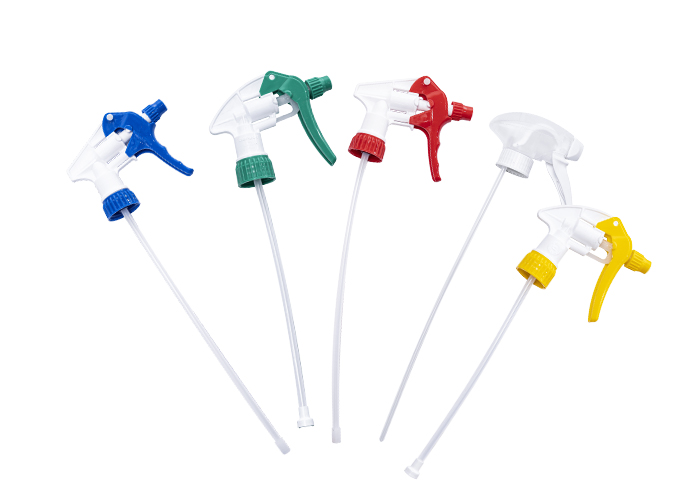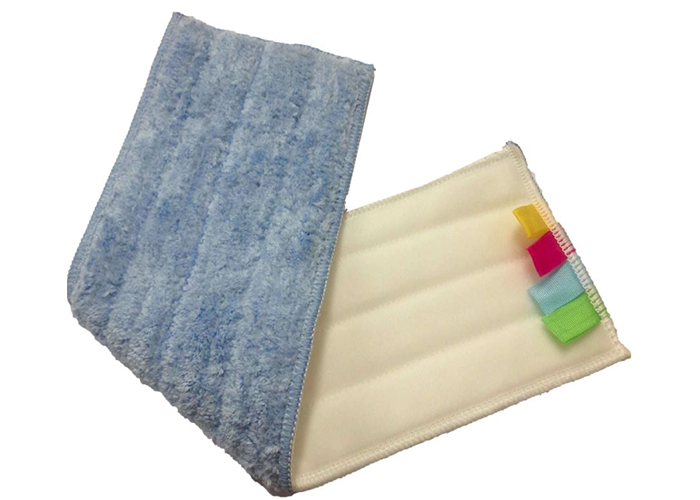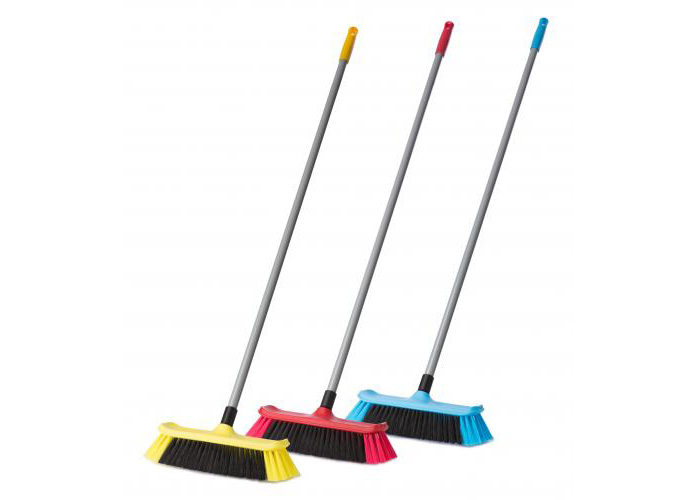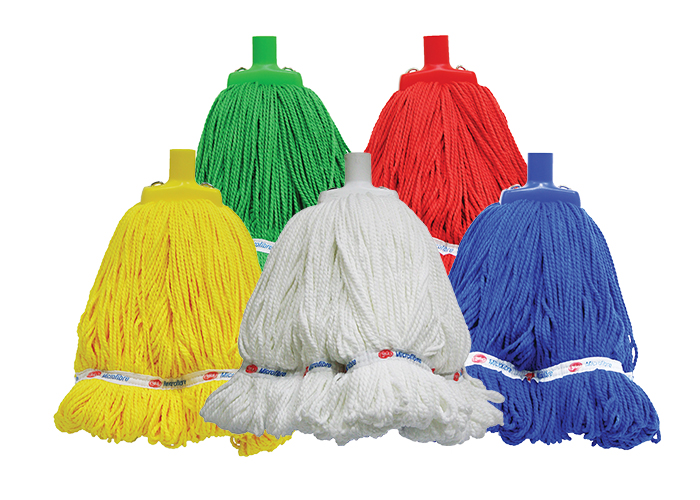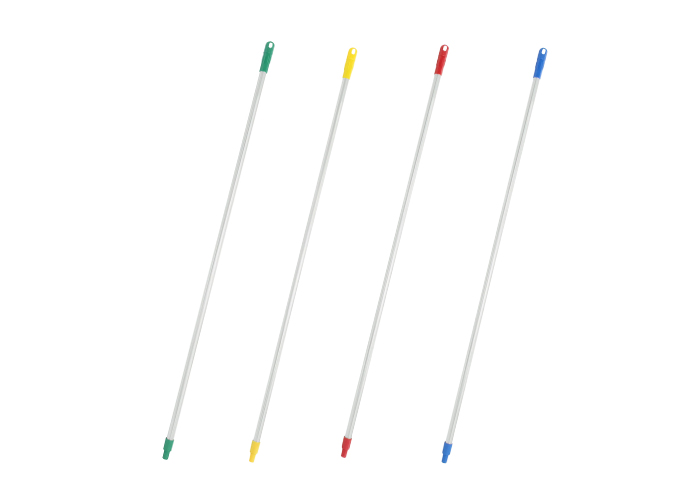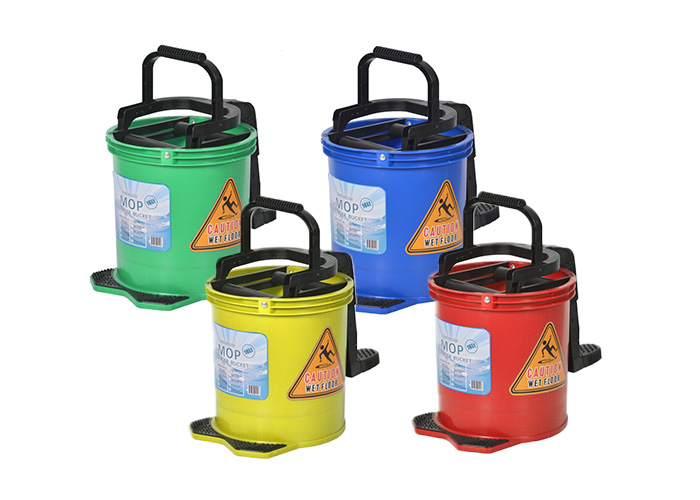
How to avoid cross-contamination within your cleaning sites
At Proquip NZ Ltd, we understand the significance of maintaining high standards in cleanliness, especially in environments where health and safety are paramount.
What is Colour Coding?
Colour coding is a simple yet highly effective system used in the cleaning industry to enhance hygiene, safety, and efficiency. By assigning high visibility colours to your cleaning supplies, you ensure they are easily identifiable for use in designated areas. This practice helps prevent cross-contamination, ensures the right tools are used for the right jobs, and simplifies training for cleaning staff.
Benefits of Colour Coding
- Preventing Cross-Contamination: One of the most critical benefits of colour coding is its role in preventing cross-contamination. For example, the same mop used in a bathroom should not be used in a kitchen. By assigning different colours to different areas, such as blue for general areas and red for bathrooms, the risk of spreading germs is significantly reduced.
- Enhancing Safety: Using colour-coded equipment helps in identifying tools quickly, reducing the chance of errors. This is especially important in environments like hospitals, where using the wrong cleaning equipment can lead to serious health risks.
- Simplifying Training: Colour coding makes it easier to train new staff. New employees can quickly learn which tools to use for specific tasks, which helps in maintaining consistency and quality in cleaning practices.
- Improving Efficiency: With colour coding, cleaning staff can work more efficiently. They spend less time figuring out which tools to use and more time cleaning, which enhances productivity.
Implementing Colour Coding
1. Identify Areas and Tasks
Identify the different areas within your facility and the tasks that need specific cleaning protocols. For example, bathrooms, kitchens, public areas, and medical facilities each have unique cleaning needs.
2. Assign Colours:
Assign specific colours to each area or task.
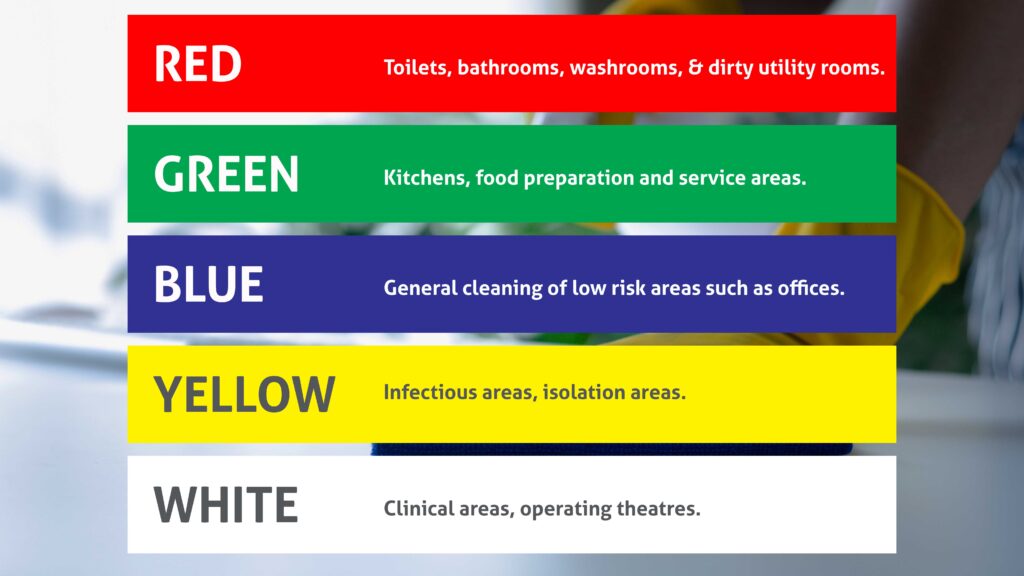
The most common colour code designation is RED for bathrooms and toilets, BLUE for general cleaning (e.g., hallways, offices, etc), GREEN for food preparation areas, YELLOW for infectious areas, and WHITE for clinical areas and operating theatres.
3. Colour Code Your Equipment
Ensure all cleaning tools and equipment are either clearly labelled with the appropriate colours, or purchase specifically coloured cleaning equipment. This includes mops, buckets, cloths, brushes and spray bottles.
Proquip supplies mop pads, refills, cloths, buckets and spray bottle triggers in several colours to allow you to colour code your cleaning systems. See an example of some of these products below, or talk to our team for more information.
4. Train Staff
The most important step in implementing a new system, is ensuring you and your staff are on the same page. Conduct comprehensive training sessions for all cleaning staff. Make sure they understand the importance of colour coding and how to apply it in their daily routines.
5. Monitor and maintain
Regularly monitor the use of colour-coded equipment to ensure compliance. Replace worn-out or damaged tools promptly to maintain the integrity of the system.
Conclusion
Colour coding is a straightforward yet powerful practice that can greatly improve hygiene, safety, and efficiency in the cleaning industry. At Proquip NZ Ltd, we advocate for the adoption of such systems to ensure the highest standards of cleanliness. By preventing cross-contamination, enhancing safety, simplifying training, and improving efficiency, colour coding is a critical component of any effective cleaning strategy.
For more information on colour-coded cleaning tools and equipment, visit our website or contact our team at Proquip NZ Ltd. We’re here to help you maintain a clean and safe environment.

